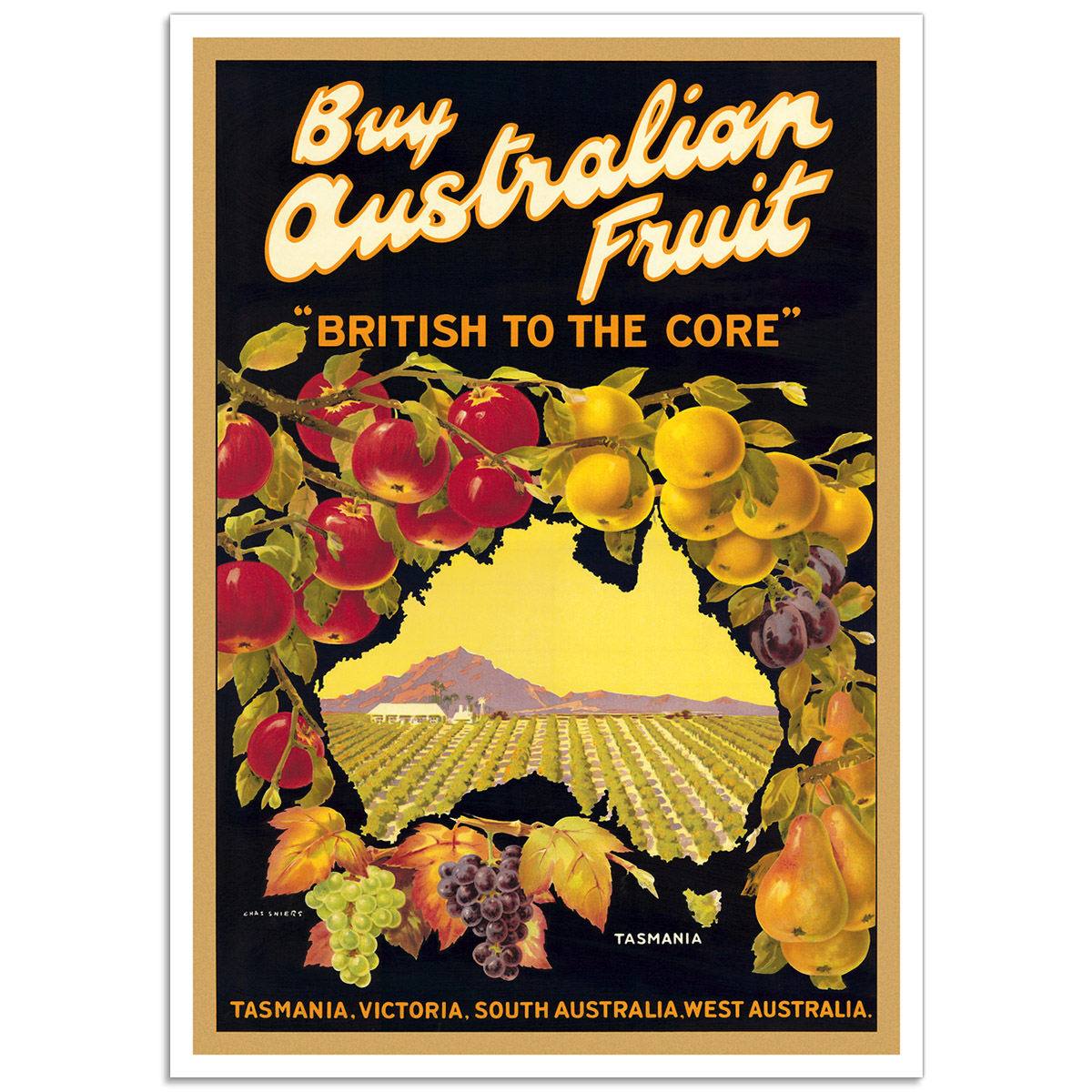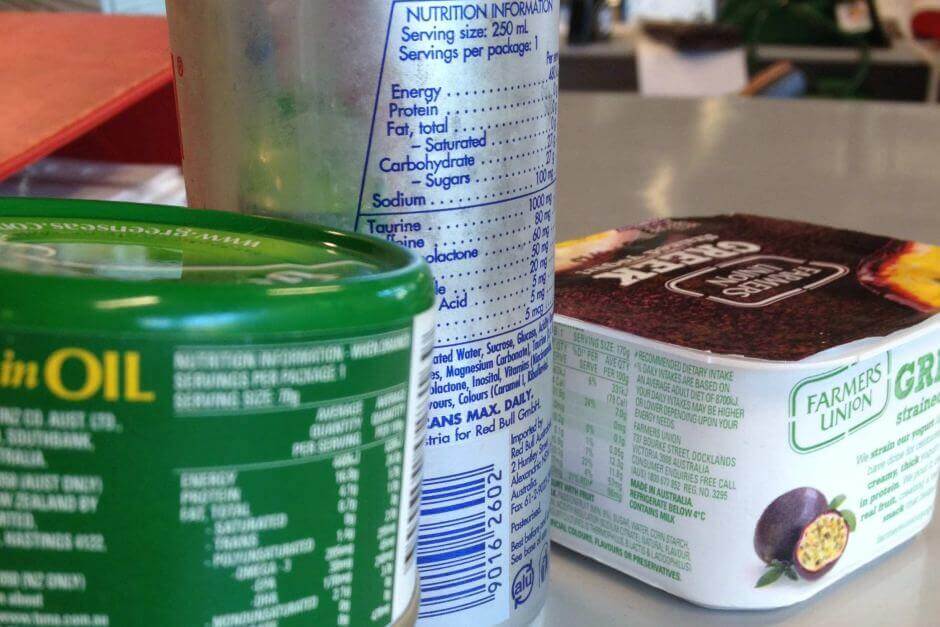44 how to read australian food labels
How to Read Food Labels & Understand Nutrition Info Panel | Better ... Australian food labels generally have two columns: One shows the nutritional value of a single serve and the other shows the nutritional value per 100g/ml. It's important to know the difference and have your glasses on when you read the label. Why? Because it's easy to get confused. Take rice crackers and yoghurt as an example… How to read a food label - Healthy Kids Choosing foods in the supermarket can be difficult, so here's a handy guide to help you make decisions.
How To Read A Food Label - Men's Health Magazine Australia But what if I told you that food manufacturers are also masters at manipulating the figures on the nutrition label so that they can put on the front of the food label, a health claim, which may include; low in fat, salt reduced, low in sugar, high protein and so on. These health claims are useless if the food itself is not a healthy food.
How to read australian food labels
Understanding Food Labels | WW Australia - Weight Watchers It's okay to eat the product after this date, but some of the quality of the food may be reduced. Foods that should not be consumed after a certain date for health and safety reasons, such as meat and dairy, must carry a 'use-by' date. You shouldn't eat any food that is past its 'use-by' date. Some foods such as bread carry a 'baked on ... Reading food labels to avoid food allergies and intolerances Reading food labels to avoid food allergies and intolerances In Australia all packaged foods must include a food label. Food labelling is governed by Food Standards Australia New Zealand (FSANZ). Nutrition information is found in two places on a food label: the ingredient list and the nutrition information panel. Sample food label Episode 8: How to read a food label - Part 2 - YouTube In the second episode of how to read a food label, our Dietician Claire explains how to apply this knowledge in every day life when you are buying food. #ili...
How to read australian food labels. What's on a food label | NSW Food Authority How to read a label What's on a food label What's on a food label Food name The name of a food must be sufficient to indicate its true nature. For example, 'fruit yoghurt' should contain fruit. If it is fruit flavouring, the product should say 'fruit flavoured yoghurt'. For more visit FSANZ. Dairy-Free: How to read food labels - thedietitian If you are dairy free, reading labels is a must. It would be easier if by law Australian companies had to have a clear allergen statement- but this is not the case. ... Dairy-Free: How to read food labels. Updated: Jun 4, 2021. If you are dairy-free, reading labels is a must. It would be easier if by law Australian companies had to have a clear ... Understanding food labels fact sheet - NDSS Food labels will typically include a nutrition information panel, list of ingredients, the 'use by' or 'best before' date and identify potential food allergens and additives. Food labels also tell you the amount of carbohydrates (carbs) you eat and drink. This can help you manage your blood glucose levels. PDF how to understand food labels - Eat For Health Food with less than 400mg per 100g are good, and less than 120mg per 100g is best. Ingredients Listed from greatest to smallest by weight. Use this to check the first three ingredients for items high in saturated fat, sodium (salt) or added sugar. Other names for ingredients high in saturated fat: Animal fat/oil, beef fat,
How to read food labels | healthdirect In Australia, the law requires all manufactured foods to carry labels containing safety and nutrition information. This information helps you to make decisions about the food you buy and eat so you can follow a healthy diet. The label will tell you: 1. the name of the product, describing accurately what it is 2. the brand name 3. what ingredients i... PDF Reading food labels - Queensland Health Reading food labels . Understanding how to read food labels can help you make healthy food choices. Food Standards Australia and New Zealand (FSANZ) regulates food labelling in Australia. Most packaged food and drink must have a nutrition information panel. Exceptions include those in very small packages, some baked products and take-away food ... Labelling poster - how to read food labels This interactive resource explains the food labelling requirements set out in the Food Standards Code and what that information means. Click on the numbers to find out more about food labelling. A useful poster is also available. You can download a copy here (PDF 372KB), or for a printed A2 version please email information@foodstandards.gov.au. Labelling - Food Standards The Food Standards Code includes the general labelling and information requirements (Chapter 1 of the Code) that are relevant to all foods, and sets out which requirements apply in different situations (for example food for retail sale, food for catering purposes, or an intra-company transfer).
Understanding Nutritional Labelling | Uncle Tobys If one has just 1½ stars and the other has 4 stars, the 4 stars one is the healthier option. And Uncle Tobys has Australia's largest range of 4 star muesli bars. If you're choosing a breakfast cereal, compare the number of stars on the labels of products within the breakfast aisle. All Uncle Tobys cereals have an HSR of 4 stars or more. Food labelling - Health.vic Food labels must carry essential information, so that consumers are informed of the nature and properties of foods before they buy. Food businesses must ensure that they do not mislead or deceive consumers with any claims made on food labels. Food importers must also comply with Australian labelling laws. All packaged foods sold in Australia ... Food labels - Better Health Channel No added sugar - products must not contain added sugar, but may contain natural sugars. Reduced fat or salt - should be at least a 25% reduction from the original product. Low fat - must contain less than 3% fat for solid foods (1.5% for liquid foods). Fat free - must be less than 0.15% fat. Food labelling | NSW Food Authority Food labelling Food labelling All food sold in Australia must comply with the Australia New Zealand Food Standards Code for labelling. Sometimes there are other requirements too - for example, total weight and measure statements are regulated by the National Measurement Institute.
How to Read Food Labels in Australia and what those claims really mean | Australian Women Online
Reading food labels - Food Allergy Education How to read food labels that meet the new PEAL law Under the new PEAL law, common food allergens are to be listed with the plain English name alongside the actual ingredient name. This is shown in the label example below. In the statement of ingredients, declarations must: Be in bold font. Have bold font contrasting distinctly with other text.
Reading food labels | Heart Foundation How to read a food label. The first step is to find the nutrition information panel. It's usually located on the back or side of the product packaging. Once you've found the nutrition information panel, the next step is to locate the ingredients - often they're to the side or below the nutritional panel. Nutrition information panels ...
Food label reading guide | Nutrition Australia The Health Star Rating is a front of pack labelling scheme which can be used to make healthier food choices at a glance. The rating range is from ½ - 5 stars and the more stars, the healthier the choice. Recommended minimum star ratings for food and drink categories Remember: Reading food labels can help us make healthy choices.
How to understand food labels - Eat For Health The Nutrition Information Panel on a food label offers the simplest and easiest way to choose foods with less saturated fat, salt (sodium), added sugars and kilojoules, and more fibre. It can also be used to decide how large one serve of a food group choice or discretionary food would be and whether it's worth the kilojoules.
Label reading - Baker Fact sheets. Label reading. This fact sheet gives you guidance on understanding how to read nutrition information panels to help you identify healthy choices. This fact sheet will allow you to identify processed and packaged foods that are: lower in energy (kJ) lower in saturated and trans fat. lower in sugar. lower in sodium (salt)
How to read food labels in Australia: Find nasties and real nutritional ... My advice for reading food labels is to look at the 'per 100g' values, as 'per serve' can often be misleading if you're likely to eat more than the suggested serving size. The 'per 100g' column is also the most useful for comparing products to assess their sugar, protein, sodium and fat content.
Read It Before You Eat It: How to Decode Food Labels and Make the Healthiest Choice Every Time ...
Understanding food labels: How to read Australian nutritional panels Under FSANZ rules, these labels must reveal how much of the following is in the product: Energy (in kilojoules or both kilojoules and calories) Protein Fat Saturated fat Carbohydrates Sugars Sodium (salt) These contents must show average amount per 100g (or 100ml for liquids) and per serving. A breakdown of what's on nutrition labels
How to Read Food Labels - Dr Lockie's Blog Both labels have a second column telling you how much sugar is in 100g of their cereal, allowing you to compare products easily. When you do this, it's instantly clear that Cereal A has 16.7g sugar per 100g and Cereal B has 21.1g. Be vigilant about how many servings you're eating.
Your easy guide to reading and understanding food labels The Health Star Rating is calculated using: Energy (kilojoules). Nutrients to limit - saturated fat, sodium (salt) and sugars. Positive nutrients - dietary fibre, protein and fruit, vegetable, nut and legume content. Because Health Star Ratings are designed to judge similar food products, comparing different kinds of foods will not give ...
Episode 8: How to read a food label - Part 2 - YouTube In the second episode of how to read a food label, our Dietician Claire explains how to apply this knowledge in every day life when you are buying food. #ili...

Buy Australian Fruit - British to the Core | Vintage Australian Promotional Poster | Just Posters
Reading food labels to avoid food allergies and intolerances Reading food labels to avoid food allergies and intolerances In Australia all packaged foods must include a food label. Food labelling is governed by Food Standards Australia New Zealand (FSANZ). Nutrition information is found in two places on a food label: the ingredient list and the nutrition information panel. Sample food label
Understanding Food Labels | WW Australia - Weight Watchers It's okay to eat the product after this date, but some of the quality of the food may be reduced. Foods that should not be consumed after a certain date for health and safety reasons, such as meat and dairy, must carry a 'use-by' date. You shouldn't eat any food that is past its 'use-by' date. Some foods such as bread carry a 'baked on ...









Post a Comment for "44 how to read australian food labels"